Coonhounds are mid-to-large scenthounds that excel at hunting smaller creatures. Six different Coonhound dog breeds exist. If you’re interested in one or more of these breeds, you’re undoubtedly going to be curious about the breed’s shedding habits.
So, do Coonhounds shed heavily?
Coonhounds can shed a lot depending on the breed you adopt. For example, the American English Coonhound sheds moderately while the Black and Tan Coonhound sheds far more. But overall, the Coonhound is considered a moderate shedding breed.
What about grooming? Keeping your Coonhound’s coat groomed isn’t too difficult, but you may have to commit to brushing this dog often.
In this post, I’ll walk you through the different Coonhound breeds and expound further on how much each one sheds. I’ll also talk about grooming this breed so you know what to expect.
Coonhound Shedding (It’s a Mixed Bag)
Coonhounds can be low-shedding to high-shedding depending on the breed.
And there are six Coonhound breeds in total. So, in this section, I’ll give you an overview of each Coonhound breed and discuss how much they shed.
Black and Tan Coonhound
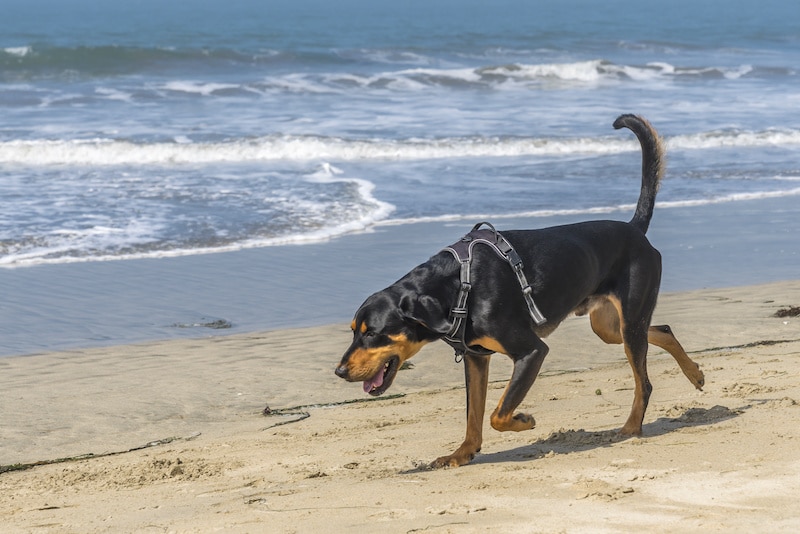
First, there’s the Black and Tan Coonhound, which is the OG Coonhound breed. This dog is a mix between the Black and Tan Virginia Foxhound and the Bloodhound and was first bred in the United States in 1900. Black and Tan Coonhounds have a glossy, dense, and short coat.
If you’ve read this blog, then you’ll recall that dog fur grows in different phases or stages. Longer fur has an equally long hair growth cycle while shorter hair has an abbreviated hair growth cycle.
This means that the hair comes out faster, as the last stage of the hair growth cycle is releasing the fur. On a shedding scale of 1 to 5, a Black and Tan Coonhound is a 5/5.
Redbone Coonhound
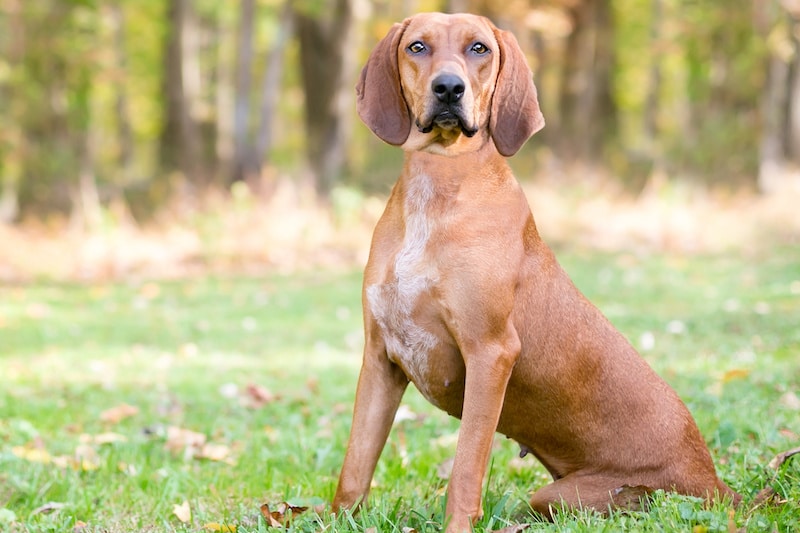
After the Black and Tan Coonhound was officially recognized, the Redbone Coonhound came next. This hunting dog from the southern US is a muscular and lean dog with a smooth, short coat.
The coat’s texture is coarser, and the Redbone Coonhound is a much less frequent shedder despite its short fur. I’d rank the Redbone Coonhound a 2/5 in terms of shedding.
English Coonhound (AKA American English Coonhound)
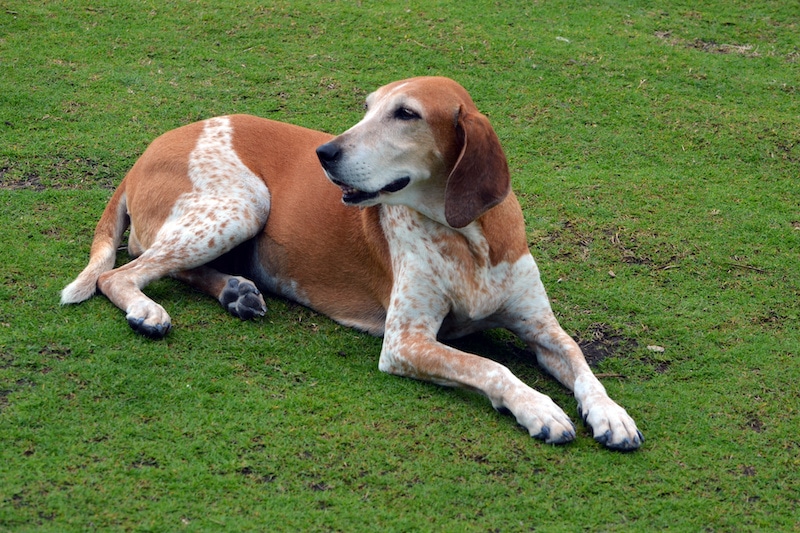
The English Coonhound was recognized by the United Kennel Club or UKC in 1905, three years after the Redbone Coonhound got added.
Known also as the American English Coonhound and the Redtick Coonhound, the English Coonhound is a southern US dog breed with a lineage to foxhounds.
A medium-sized Coonhound, the English Coonhound features a coarse and short coat like the Redbone Coonhound. This Coonhound is a 2/5 on the shedding scale as well.
Bluetick Coonhound
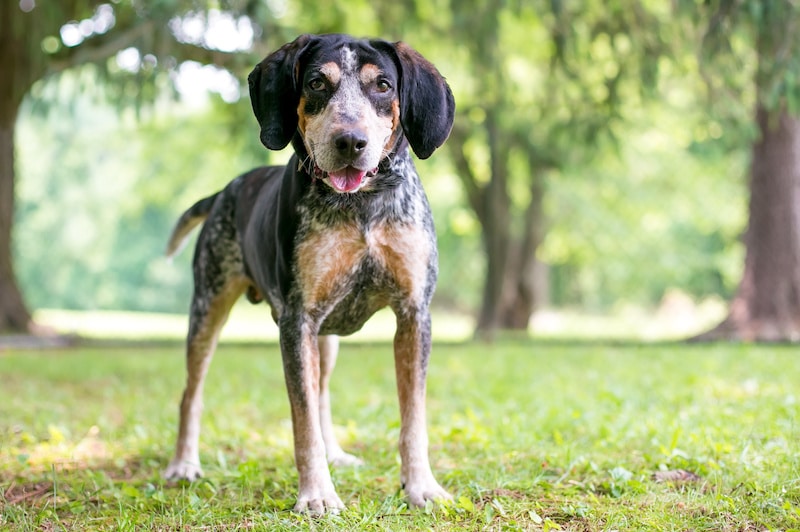
The Bluetick Coonhound is next. This deep-mouthed dog from the US with a cold nose has a muscular body and a glossy, coarse coat. That coat might feature blue coloration.
Despite its coat coarseness, the Bluetick Coonhound is susceptible to shedding. I would rank him about a 3/5, so not as bad as the Black and Tan Coonhound, but with more shedding than a Redbone Coonhound or an English Coonhound.
Treeing Walker Coonhound
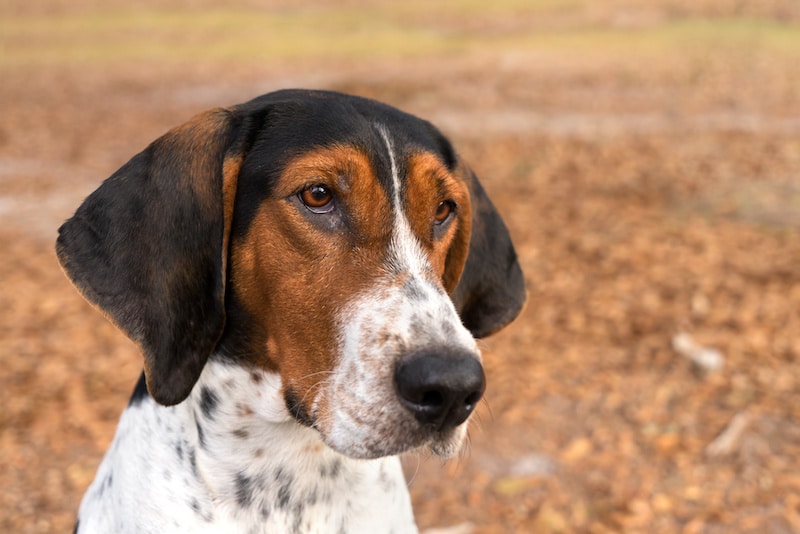
The Treeing Walker Coonhound is bred from American and English Foxhounds and was once called the Tennessee Lead. He was even the official state dog of Tennessee for a week back in 2019.
Like the Bluetick Coonhound, the Treeing Walker Coonhound was thought to branch off from the American English Coonhound. Thus, the Treeing Walker and Bluetick shed about the same!
Plott Hound
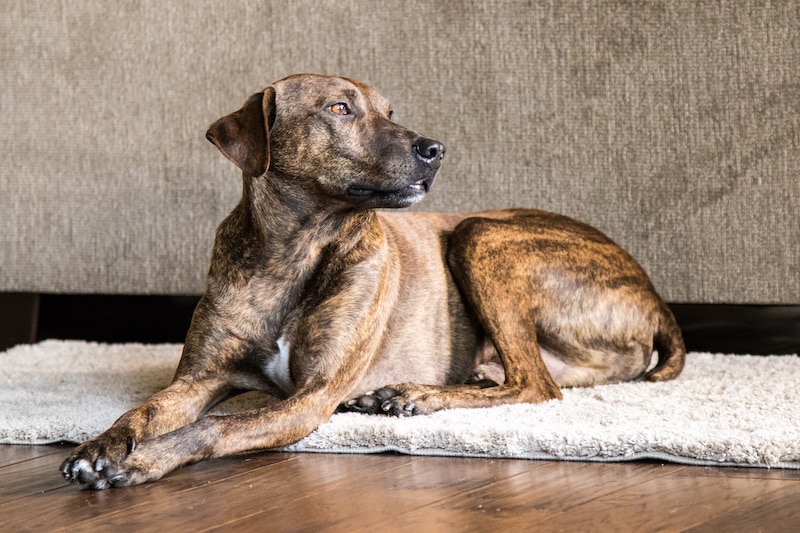
That brings me to the sixth and final Coonhound breed, which is the Plott Hound. Unlike all other Coonhounds, the Plott Hound is not related to Foxhounds, but Boar-Hunting Dogs.
The medium-sized build of the Plott Hound is muscular with skin that doesn’t sag. Its fur is shorter but sometimes medium length and feels smooth to the touch.
The Plott Hound doesn’t shed that much (about the same as the other Coonhounds). However, As a double-coated breed, you will likely notice seasonal shedding as the dog blows coat once or twice per year. And the double coat can mean more effort on the grooming front.
Recommended: Go here to see our top-rated dog hair blow dryers
Grooming Your Coonhound
Although the rate of shedding varies from Coonhound to Coonhound, the breeds share a lot of common traits. Coonhounds usually have short, smooth fur, and they can be double-coated.
Keeping that in mind, here’s how I suggest grooming your Coonhound.
Whether yours is a heavy shedder or not, regular brushing is a must. A rubber brush or glove will make a quick job of grooming the Coonhound’s short, glossy fur.
If you’re brushing a double-coated breed such as the Plott Hound, make sure you comb thoroughly through its fur to reach both layers. And in this case, a de-shedding brush is best, especially during times of heavy shedding.
You shouldn’t have to worry about detangling the Coonhound’s coat. The short length and mostly smooth texture of the fur prevent painful knots and mats. So even if you do have a heavy shedding variety, given the short coat length, they’re relatively easy to groom.
How often should you comb your Coonhound?
That depends on the breed. If yours is a low-shedding Coonhound, then you can brush the dog several times per week. For Coonhounds that shed more frequently, daily to every other day is a good timeframe for brushing.
You’ll certainly have to get into a daily brushing habit when grooming a double-coated Coonhound like the Plott Hound.
Brushing your Coonhound will collect dead and loose fur before it can fall off your dog and shed all over the house.
Further, you spread skin oils across the dog’s body when you comb them. These oils moisturize your Coonhound’s skin so it doesn’t get itchy.
Plus, with a short-haired dog like the Coonhound that already has a glossy coat, its fur will look even smoother and more shimmery.
About monthly, check your Coonhound’s nail length and trim the nails if need be. You can always bring your dog to a groomer for this job.
You shouldn’t have to bother cutting your Coonhound’s coat, which will save you time.
Otherwise, you just have to bathe the dog about monthly and no more infrequently than six weeks. Use gentle dog shampoo to avoid irritating and drying out your Coonhound’s skin.
How to Reduce Excessive Shedding
Do you have a heavy-shedding Coonhound and you’re concerned about how much hair it’s dropping all over the house?
Some shedding is normal. In the case of the Plott Hound, which sheds seasonally, several weeks can go by with a high rate of shedding. This usually isn’t anything to be concerned about but there is a lot you can do to reduce shedding overall, and this guide shows you how.
However, if you don’t feel like reading the above guide, the main thing to do is follow a proper grooming routine every week. Grooming really is your best means of reducing how much hair your Coonhound sheds whether it’s a low-shedding or high-shedding breed.
For the most part, this involves brushing using a suitable dog brush. But you can “boost” your grooming results by bathing with a good quality dog shampoo and if you really want to ramp things up in the grooming department, you can use a dog hair blower.
The next best thing to do is assess your Coonhound’s diet. A diet deficient in omega-3s and other nutrients can lead to poor skin and coat health. So, getting your dog’s diet can not only help them live a healthier life, but it can also reduce the amount of fur they drop over time.
As a general tip, the fewer fillers in your dog’s food, the better. Filler-heavy food usually contains fewer nutrients, and more so, it could trigger allergies in some canines.
If your dog is still shedding heavily even with a proper grooming routine and optimal diet, it may be time to schedule a checkup with your local veterinarian.
Pests such as fleas can irritate your Coonhound’s skin, making them lose fur in affected areas, and your dog’s vet can prescribe an anti-flea medication for this. And there are other underlying health issues that can lead to an increase in shedding. So, while shedding is normal, sometimes it’s part of a larger problem and if that’s the case, your vet should be able to advise you.
Is a Coonhound Right for You?
The Coonhound is a hunting and scent dog that was originally bred to hunt bears, cougars, bobcats, feral pigs, and raccoons.
Coonhounds have varying personality traits depending on the breed but are generally thought to be loving, gentle, even-tempered, adaptable, trusting, and easygoing. Those are some highly desirable traits in a canine companion.
Is the Coonhound a good apartment dog? Not really. Mostly because these are pretty heavyweight breeds, and large dogs can feel constricted in an apartment.
The Black and Tan Coonhound weighs 64 to 75 pounds, the Treeing Walker Coonhound is 45 to 65 pounds, the Redbone Coonhound weighs 45 to 70 pounds, and the Bluetick Coonhound clocks in at 55 to 80 pounds.
Plus, Coonhounds are very energetic, so they do best with a large yard to play in. A local park or–even better–a dog park will suffice as well.
What about other pets? Coonhounds are companionable with other dogs unless they perceive the dog as a threat to the Coonhound’s role as the leader of the pack. Then the Coonhound can become pushy and a little aggressive as he tries to establish dominance.
Since the Coonhound hunts smaller creatures, cats, rabbits, hamsters, ferrets, and other small pets should not share a house with the Coonhound. It could end in disaster!
The sweet personality traits of the Coonhound make this breed a natural fit for families with kids. That said, you still want to socialize your dog before introducing him to children.
Some Coonhounds are more vocal than others depending on the breed. The Redbone Coonhound is one that will bark when on the hunt and off. Their voice almost sounds like they’re singing at times! The Treeing Walker Coonhound is renowned for its clear voice as well.
Bottom Line
Coonhounds include six breeds, some of which shed a little and others which shed a lot. No matter the type of Coonhound you have, I can’t stress enough that this breed requires regular grooming to control its fur.
The Coonhound is a sweet, affectionate, loyal dog that’s best for families without small pets. Perhaps the Coonhound is just the dog you’re looking for!

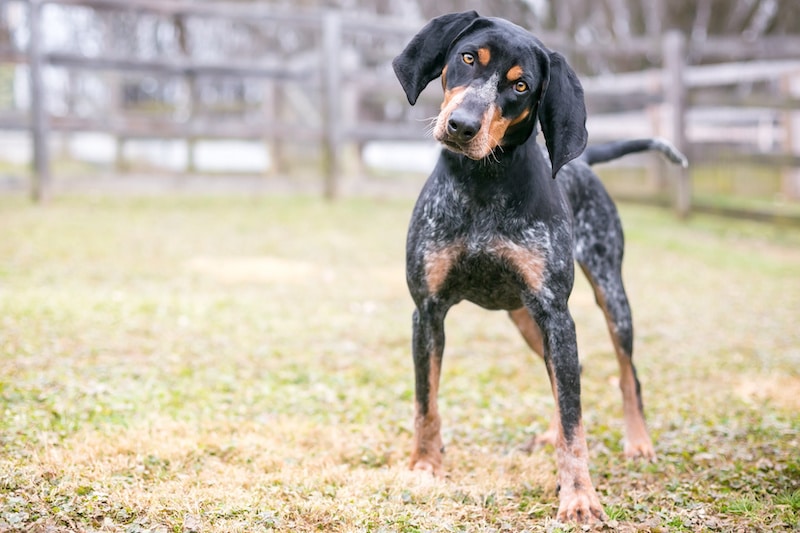










Please note: By submitting a comment using the above comment form, you confirm that you agree with the storage and handling of your data by this site as detailed in our Privacy Policy.